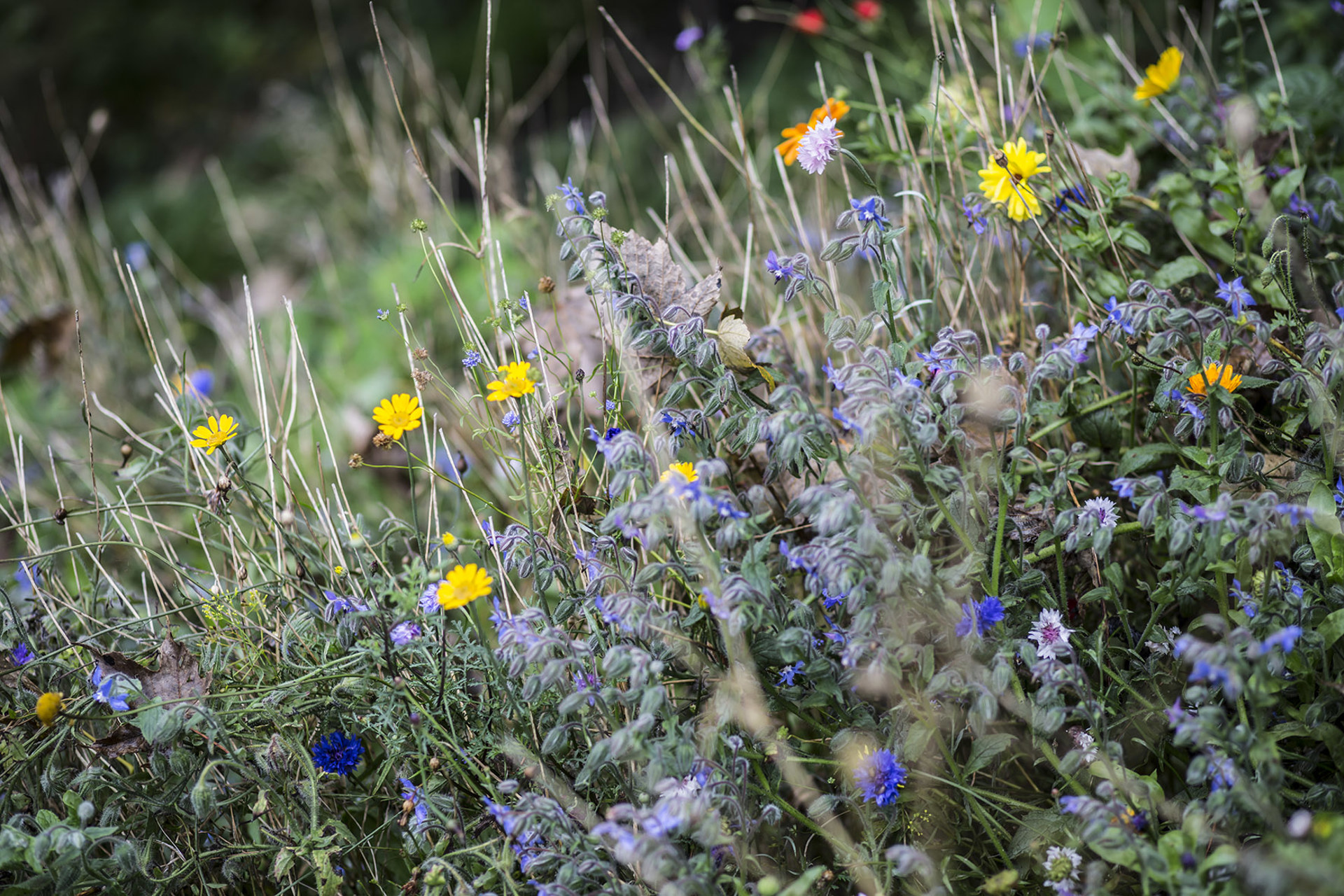
All Ireland Pollinator Plan
We all depend on pollinators and the important service they provide. Unfortunately, our pollinators are in decline with almost one third of the 99 different types of bees in Ireland are threatened with extinction. The All-Ireland Pollinator Plan is a strategy that addresses this problem. It is a shared plan of action that aims to help pollinators and improve biodiversity across the island.
Donegal County Council is a Local Authority partner to the All-Ireland Pollinator Plan.

Ten Top Actions for Pollinators
Visit the All-Ireland Pollinator Plan’s top ten evidence-based actions, as summarized below, and learn what action you can take to help these important insects. Or watch their Top Ten Actions for Pollinators video which takes you through each of the recommendations.
Reduce mowing to allow native wildflowers like Dandelions, Clover, and Birds-foot Trefoil to naturally return over time.
The more blossom your hedgerow has in spring, the better it is for biodiversity. Allow hedges to grow into a natural A-shape profile rather than a neat box shape. Flowers grow on older wood, so avoid cutting annually – cut on a three-year rotation instead to allow them to flower in spring.
Find out more:

Native trees and shrubs such as Willow, Hawthorn, Rowan, Crab Apple, and Holly support huge numbers of insects including pollinators. Plant a young tree in the autumn or winter or grow them from seed.
Idea: Allow some mature trees to grow within hedgerows.
Find out more:
These potent chemical cocktails are designed to kill various organisms. One of the best things you can do for pollinators is avoid using them. If you buy plants at a garden centre, ask if they have been treated with chemicals. Even ‘bee friendly’ labelled plants may have been treated with pesticides.
Note: Herbicides should still be used to remove invasive species such as Japanese Knotweed.
 Waterford ring road with bare soil
Waterford ring road with bare soil
Wild pollinators nest in hedgerows, wild areas, dry stone walls, and even in the ground. To make a nesting habitat for them, just scrape back some bare earth, leave some areas to grow wild, or simply drill holes 10cm deep in unvarnished wood for solitary bees.
Idea: Create a small bee hotel out of reeds or bamboo stems. Hang it away from bird feeders at the start of spring and leave it alone for a year to see adult bees emerge the following spring.
Find out more:
There are plenty of beautiful plants you can choose for your garden that are rich in nectar and pollen. Bidens and Bacopa are great bedding plants for small containers and hanging baskets; and herbs such as Thyme and Rosemary provide food for you as well as for pollinators. Make sure you keep these plants to your garden and don’t plant them in the wider landscape. Outside your garden, the best action for pollinators is to create biodiversity meadows and margins by reducing mowing.
Find out more:
On the island of Ireland, we have one honeybee species, and it is not in decline. Most honeybees are ‘domesticated pollinators’, living in hives and managed by beekeepers. Our 100+ wild bee species are under threat. If we have too many honeybee hives in the landscape, they can compete for food with our struggling wild pollinators. You should only get a honeybee hive if you want to start a new hobby, but it is not the best thing to do for biodiversity.
If you are thinking of getting a hive of honeybees, please get in touch with your local beekeeping association to learn how to keep healthy honeybees; avoid spreading disease to other hives and to our struggling wild pollinators.
Find out more:
You might be surprised to hear that sowing wildflower seed mixes can be detrimental to local biodiversity. Many wildflower seed mixes contain non-native species and can inadvertently introduce invasive species. Please avoid using them where possible. If you do decide to sow wildflower seed mixes, keep to garden settings, ensure they are native and of Irish origin, and never use in situations where natural habitat restoration is possible (Don’t mow, let it grow). Alternatively, you could collect and sow seeds from local wildflowers.
Note: The All-Ireland Pollinator Plan does not endorse any wildflower seed mixes, despite what third party websites may imply.
Find out more:
Large bee hotels are attractive to humans, but not great for pollinators. They can encourage the spread of disease and attract predators. Avoid anything bigger than an average-sized bird box. There are many other ways to provide nesting habitats for pollinators, such as providing wild areas of undisturbed long grass, and scraping back some bare earth. If you want to make a bee hotel, make sure it is small, and position it away from bird feeders so the insects aren’t easy targets.
Find out more:

Buncrana Tidy Towns volunteers
Many people want to help pollinators and biodiversity, but it can be hard to know where to start. Tell your friends and family about these top ten ways to help pollinators; join a community group or Tidy Towns; talk to your council, school, college, workplace, or faith community.
Change happens when word spreads. Even talking to just one person could lead to a change in how a crucial habitat is managed. If that person tells one person, and so-on, eventually we will have a network of habitats where pollinators can survive and thrive.
Find out what communities are doing for pollinators around the country in the 2022 Tidy Towns Pollinator Award newsletter
